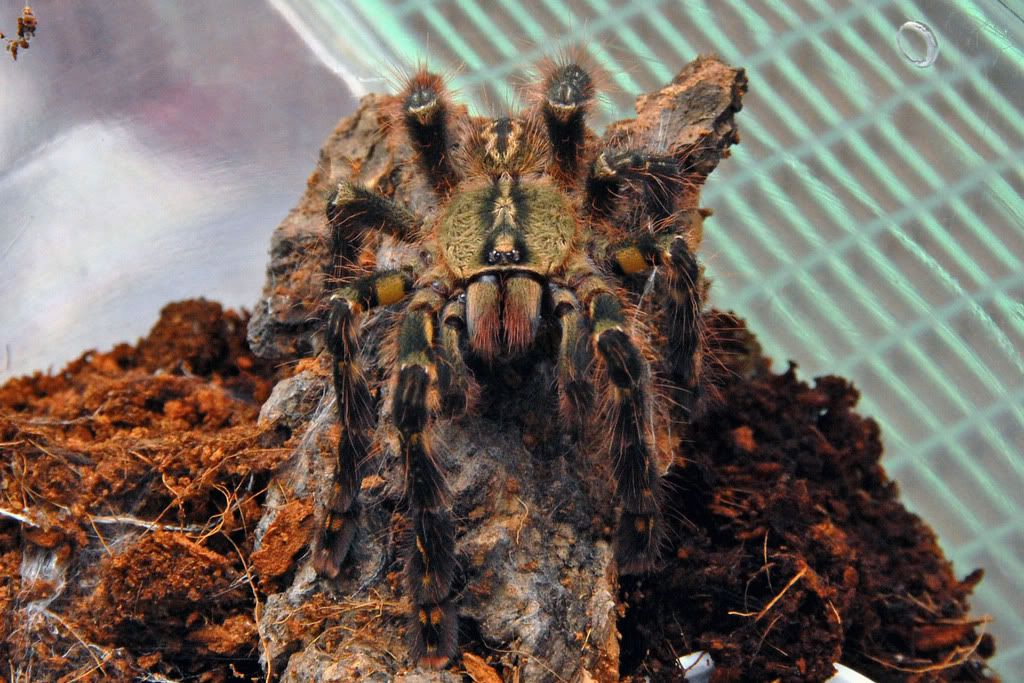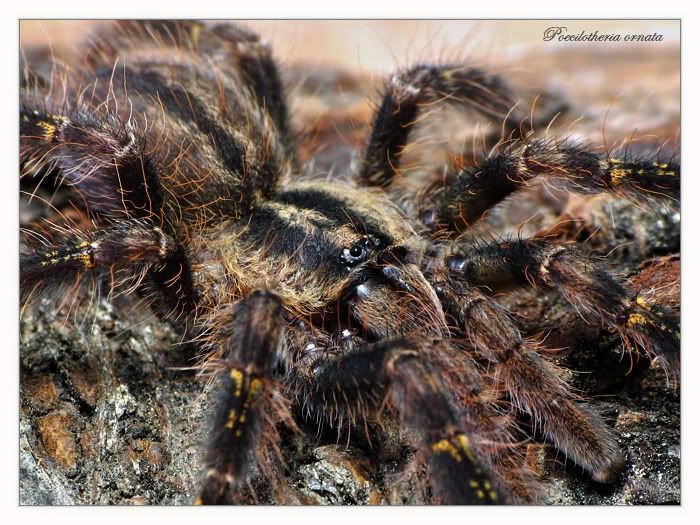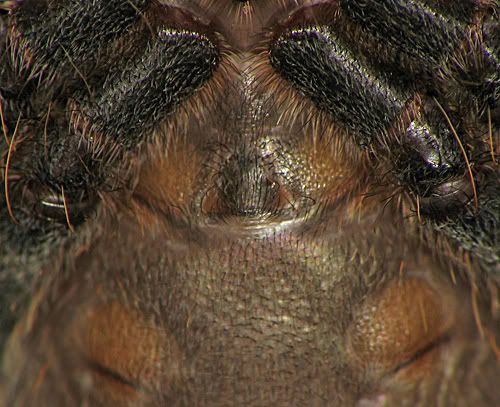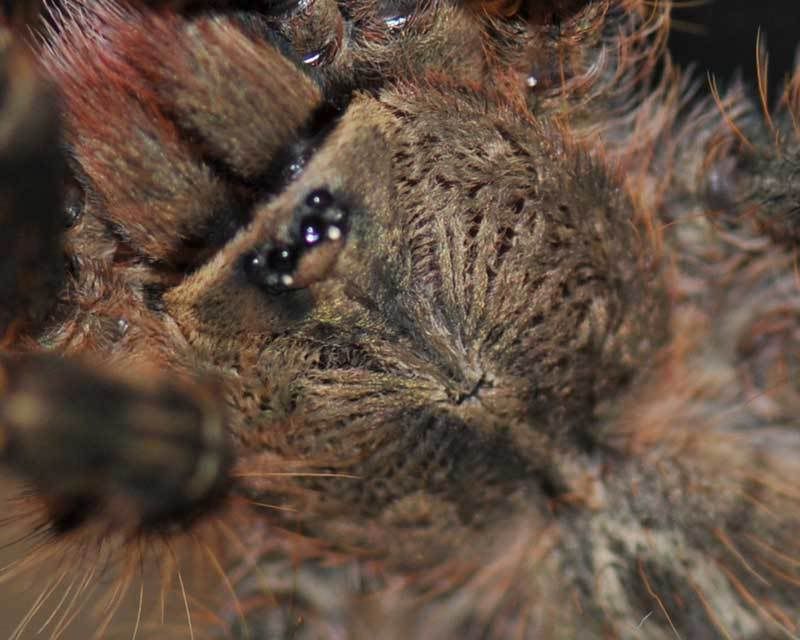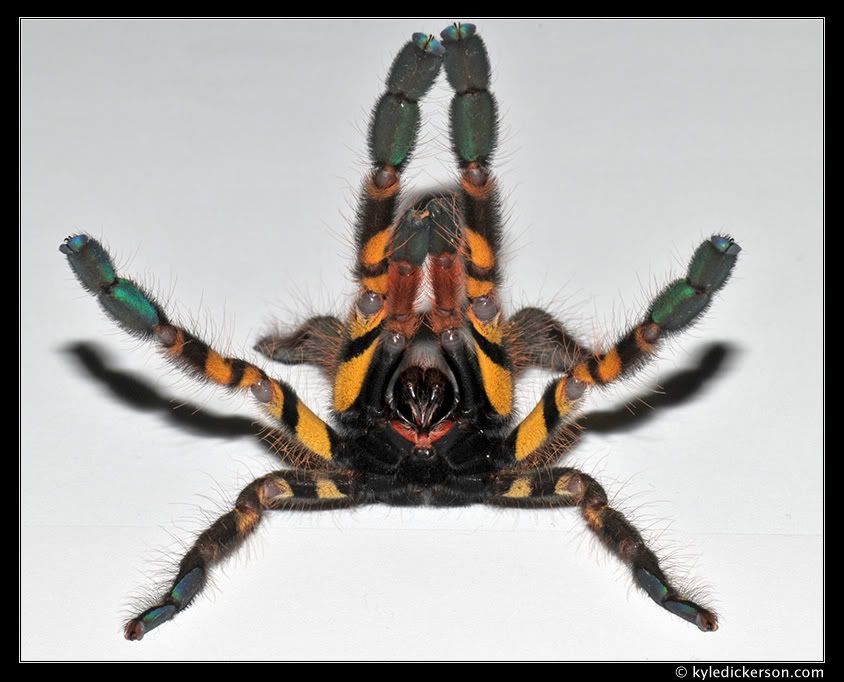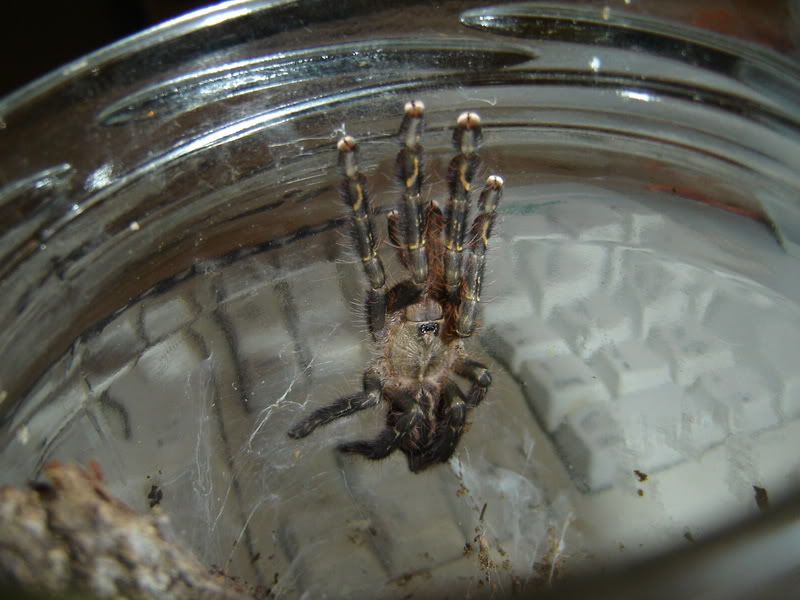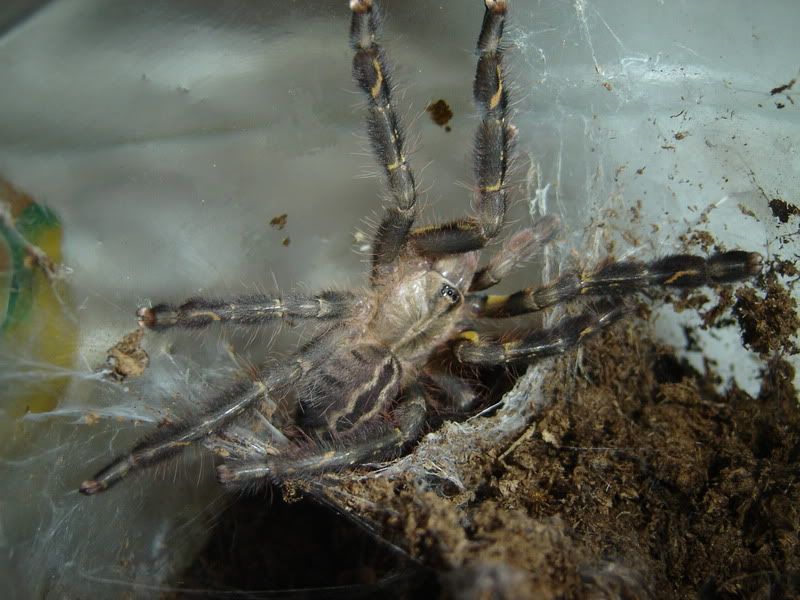- Joined
- Mar 21, 2007
- Messages
- 673
This picture should definitely clear things up. The carapace is looking rather lady like. I guess sexing by spermatecae is virtually impossible at this size. What size does the black band on the abdomen start fading away?
